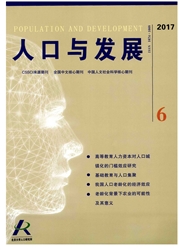

 中文摘要:
中文摘要:
基于百度LBS平台大数据,运用GIS与社会网络分析方法,构建我国334个地级市人口流动网络模型,测度并分析我国城市间人口出行流动的复杂性网络特征。大部分城市节点的入度与出度呈正相关关系,在人口流动上保持相对平衡状态;城市间人口流动呈现显著的空间集聚性,人口集散程度较高的城市主要分布在东部地区,尤其是京津冀、长三角、珠三角等城市群。整个网络在空间上具体呈现“两大四小”多中心网络格局,空间组织上则以择优连接以及局部的邻近连接为主,空间距离依然是人口流动的重要束缚力之一。通过复杂网络指标测算分析,人口流动网络具备无标度网络和小世界网络特征,表明现实世界中全国范围内城市间人口可以跨越行政等级界限自由流动,网络化特征日趋明显。
 英文摘要:
英文摘要:
Based on the Baidu LBS platform big data, using the complexity network Analysis tools, This paper constructs the urban population mobility network covering 334 cities in China, and measure and analyze the characteristics of the complex structure of the network. The result shows that:most cities are in a state of" relative equilibrium" in the population mobility, in the network it shows as the indegree and outdegree has a significant positive correlation;the urban population mobility network shows obvious spatial clustering, these cities of high population dis- tribution are mainly distributed in the eastern region, especially in Beijing,Tianjin and Hebei, the Yangtze River Delta, Pearl River Deltaurban agglomeration. The whole network present sob- viously multi - core network pattern which contains" Two hubs and Four sub - centers". The spatial organization is mainly based on the preferential connection and the local neighborhood connection, but Spatial distance is still one of the important binding forces of population mobility. The whole network is in line with the characteristics of the scale free network, and it presents a typical" small world" network characteristics, which shows that China' s urban population mob- ility can span the free flow of the administrative levels, and the network characteristics is becoming more and more obvious.
 同期刊论文项目
同期刊论文项目
 同项目期刊论文
同项目期刊论文
 期刊信息
期刊信息
